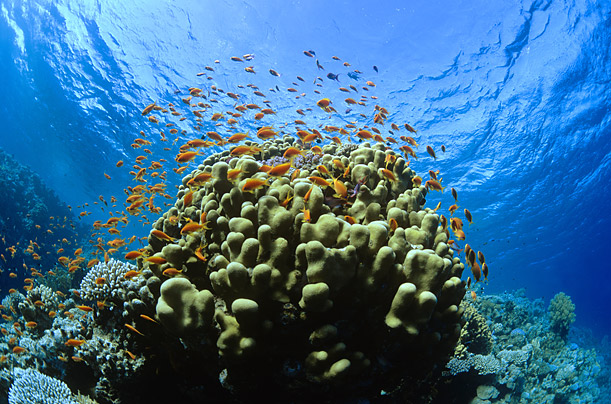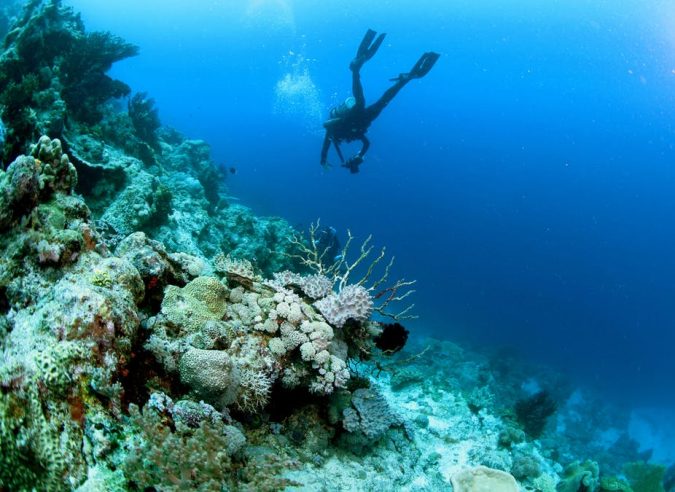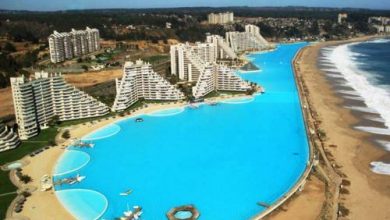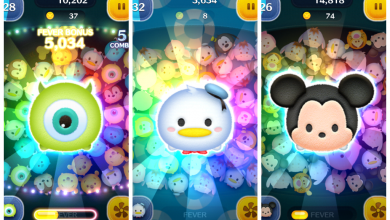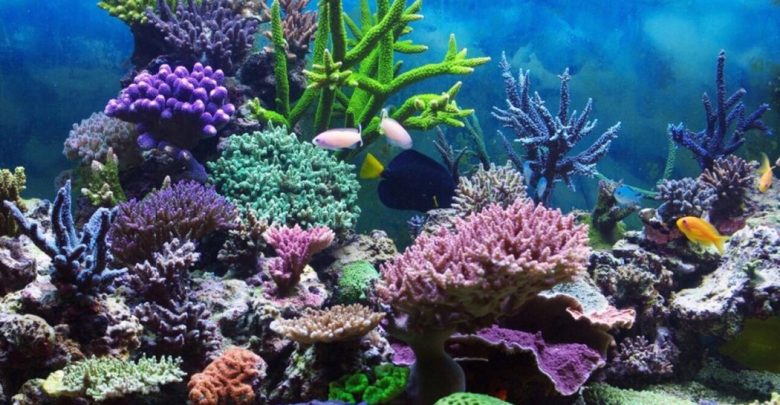
Coral reefs aren’t just immense structures built from countless corals accumulating over a surface of the marine bottom, they are actual ecosystems per se. First of all, the corals themselves live in symbiosis with algae, which is how they get their vivid and stunning colors. Second of all, many other species of fish and small marine animals also find shelter and build a livelihood among the coral forests.
Scientists estimate that about one quarter of all marine species live amongst coral reefs, making them some of the most important biodiversity sites in the world. It is estimated that by 2050 over 90% of coral reefs in the world will have died, due to the rise in ocean water temperatures. The boom of all coral bleaching incidents was in 2015-2016, when the first significant temperature rises hit the oceans. When the coral reefs disappear, so will these thousands of species of marine life, which only live among the reefs.
The Basics of Any Marine Ecosystem
Any ecosystem consists of various species of plant and animal life, that live together sharing the same physical space. In a very extended sense, we are all forming one huge ecosystem on the entire planet, marine and surface life forms alike.
While marine ecosystems are similar to surface ecosystems when it comes to basic laws (energy conservation, food schemes and the like), they are also much more mysterious to scientists and continue to fascinate. Perhaps because we are not yet able to explore the entire vastness of life underneath, the mirage of underwater life appeals so much. At the moment, scientists estimate that two thirds of marine species remain unknown to us.
Any marine ecosystem consists of a few levels of two bottom / top layers of producers (that feed everyone) and decomposers (that decompose everyone), with a few levels of consumers in between.
Those levels of consumers also develop producer-consumer relationships amongst themselves, often too complex to be reduced to a strict delimitation. But for the sake of mapping out the ecosystem, scientists develop a food scheme in order to be able to understand it better.
The Main Food Scheme of a Coral Reef Ecosystem
In a marine ecosystem anywhere in the world, a basic food scheme can be reduced to a few main components, regardless of the diversity and complexities to be found at every level:
- The major producers (which consist mainly of algae);
- A level of first consumers (consisting of species of herbivore animals);
- A second level of consumers (consisting of species of small carnivores and omnivores);
- A third and top level of consumers (consisting of carnivore predators);
- A level of decomposers (small animals that consume ocean waste and the dead, and decomposing bacteria).
As you can suspect, the algae feed everyone, but the energy remains a constant throughout the system, getting transferred between the levels and consumers involved in the exchange. In order to understand it better, we can take a look at a more down-scaled coral reef ecosystem, produced by scientists to be contained within a water tank.
Miniature Coral Reef Ecosystems
There are also coral reef ecosystems built by marine biology experts and designed to function strictly under lab conditions, either for scientific observation or to be kept in a decorative aquarium.
According to coral reef producers, a closely monitored and isolated ecosystem can work perfectly and perpetually, as long as it was designed with proper care. The law of conserving energy states comes into play, making all surplus be consumed and transformed into surplus again, feeding each link of the ecosystem.
Such an ecosystem is composed of a few trophic levels, consisting of a few fish, plenty of algae and coral reef plants, some crustaceans (optionally), selected bacteria (to act as decomposers) and, of course, corals.
Lights play a very important part in how these coral reef ecosystems work, too: it is important to expose the aquarium to light according to the instructions, in order for the algae to be able to develop enough. Respecting the prescribed times is important: too little light and the plants will be underdeveloped, making the fish and other animals starve; too much and the algae will overcrowd the ecosystem, making it harder for the other forms of life to breathe.
What next?
A coral reef ecosystem is a complex and beautiful thing, regardless of its scale. Whether it’s the Great Barrier Reef off the coast of Australia, or a miniature coral reef ecosystem in your tank, it doesn’t matter.
The key takeaway of this should be building a deeper concern for the future of coral reefs per se. Even if some pieces of coral do survive in controlled ecosystems, it will be a sad world of tomorrow when those are all that’s left.

